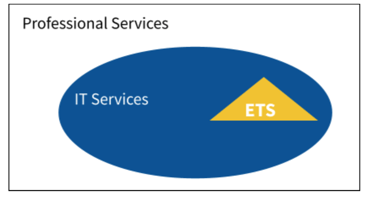As we discussed in our article Default Alive Or Dead: A Tech Services Perspective, tech services...
Default Alive Or Dead: A Tech Services Perspective

We’ve been talking about investment and how it is important for the growth of your services company. But as you’re thinking about the decision to take investment to grow, I’m reminded of Paul Graham’s classic essay “Default Alive Or Default Dead”. Just two years ago we saw how many companies were actually default dead when we saw funding dry up and they were unable to recover.
We don’t think about this question as much when we’re a services company. Most tech services companies are default alive, both because they don’t have an option - since there isn’t as much funding available - and because they generate a lot more cash even without IP investment.
But founders of tech services companies may discover that as they start pushing for growth, they might push themselves from default alive to default dead. So, in this article, we'll discuss this topic from the perspective of a tech services company.
The Cost Of Growth
In our article Hitting The Bulls-eye, we talked about the cost of growth. Let's add some perspective to that number. Let’s say you have 4M in revenue. Assume 50% COGS and 30% Selling, General, and Administrative Expenses (SGA) give you a war chest of $800k. One salesperson with roughly $250k On-Target Earnings (OTE) caps at the $4M quota. Your next year’s target is to grow 100% to $8M.
For that, you need to have one fully ramped-up salesperson by this time next year, or you will fail. But there is a rule for hiring salespeople: until you figure out sales, only one out of three salespeople will work.
So, to hit that target, you hire three people while praying that one of them will work. At a minimum, it will take you one quarter to figure that out. For that, you’ll burn $125k. But what if you discover you’re not in as great a shape as you thought? You realize your sales processes aren’t defined well enough for the new individual. What if it takes you a year before you’re able to find the right person? That one year will cost $750k, or most of your war chest. Then take into account increased operations and delivery costs, and all of a sudden, you went from default alive to default dead.
Investment and Default Dead
This example shows just how expensive fast growth can be. If you let your foot off the accelerator, you can have very stable growth. But pushing for that 100% growth necessary for the path towards real wealth means you will have to leave stability.
If you take in investment, you will run a loss. But how long are you prepared to run at a loss? The longer you do it, the more the potential rewards. But to do this, you need to remain default dead to maximize the value of the incoming investment. And this puts your company at risk. You need to consistently hit your targets and show the growth your investors expect to justify the next round of funding.
Being a services company, you are able to return to default alive. But it generally will involve a cost. You’ll have to do layoffs, and your growth will crater along with your valuation multiples. If the investors have preferred shares, it can wipe out your equity stake.
A Magnifying Glass On Your Shortcomings
Building a company is like climbing a staircase. As you get bigger, you need to build certain capabilities and structures into your business to advance to the next level. You will always have some shortcomings in your current business that need to be met because these structures reduce your agility.
This is a journey that requires careful treading. When you try to accelerate growth, you’ll amplify the impact of all your shortcomings - and you’ll need to solve these problems quickly. For example, if you mature your sales processes enough to ramp up a seller reliably in 3 months then the previous example becomes trivial.
What This Means For Your Tech Services Startup
There are a few lessons we want you to walk away with.
-
Understand the risks before taking in money. By definition when you take in investment, you switch from being a profitable to an unprofitable company. Be intentional and make sure you’re doing it for the right reasons.
-
Simulate future outcomes with paths back to profitability before taking any investment.
-
Get your internal house in order before taking money.
Unlike a product company, which starts with fundraising, fundraising requires more consideration for a services company.
Companies that join Vixul get guidance in getting their business working well, advice on when to take funding, and access to our network of investors, investment bankers, and our in-house fund VCF. If you would like the power of the Vixul ecosystem behind you, please apply here.




